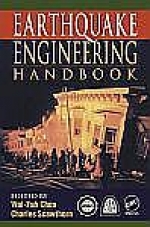Tab Article
Offers a practical perspective on the traditional and emerging techniques of earthquake engineering
Builds a background through a historical review of the problems associated with earthquakes, an introduction to dynamics, and an overview of earthquake risk management
Covers related geoscience topics, including seismogenesis, geotechnical earthquake engineering and liquefaction, soil structure interaction, probabilistic seismic hazard, and tsunamis, with a major emphasis on strong ground motion
Addresses structures from buildings and bridges to the infrastructure, including power, transportation, and communications systems
Explores new technologies, such as base isolation and structural control
Introduces new topics including casualty estimation, insurance, fire following earthquake, hazardous materials, and emergency planning
Earthquakes are nearly unique among natural phenomena - they affect virtually everything within a region, from massive buildings and bridges, down to the furnishings within a home. Successful earthquake engineering therefore requires a broad background in subjects, ranging from the geologic causes and effects of earthquakes to understanding the impact of these effects on foundations, buildings, structures, the infrastructure, and even their social and economic impact.
The Earthquake Engineering Handbook is a comprehensive resource that covers the spectrum of topics relevant to designing for and mitigating earthquakes. In it, international experts present engineering practices, research, and developments in North America, Europe, and the Pacific Rim countries. The emphasis is on professional applications, with discussion ranging from basic dynamics and geoscience to new technologies intended to avoid rather than resist the forces of earthquakes.
Covering both traditional and innovative practices, the Earthquake Engineering Handbook is the first professional reference that brings together all of earthquake engineering's many facets. Formulas, tables, and illustrations give immediate answers to questions arising in practice, and summaries of the essential elements of each topic paint a global picture from which readers can develop understanding and the ability to think beyond the results presented.


